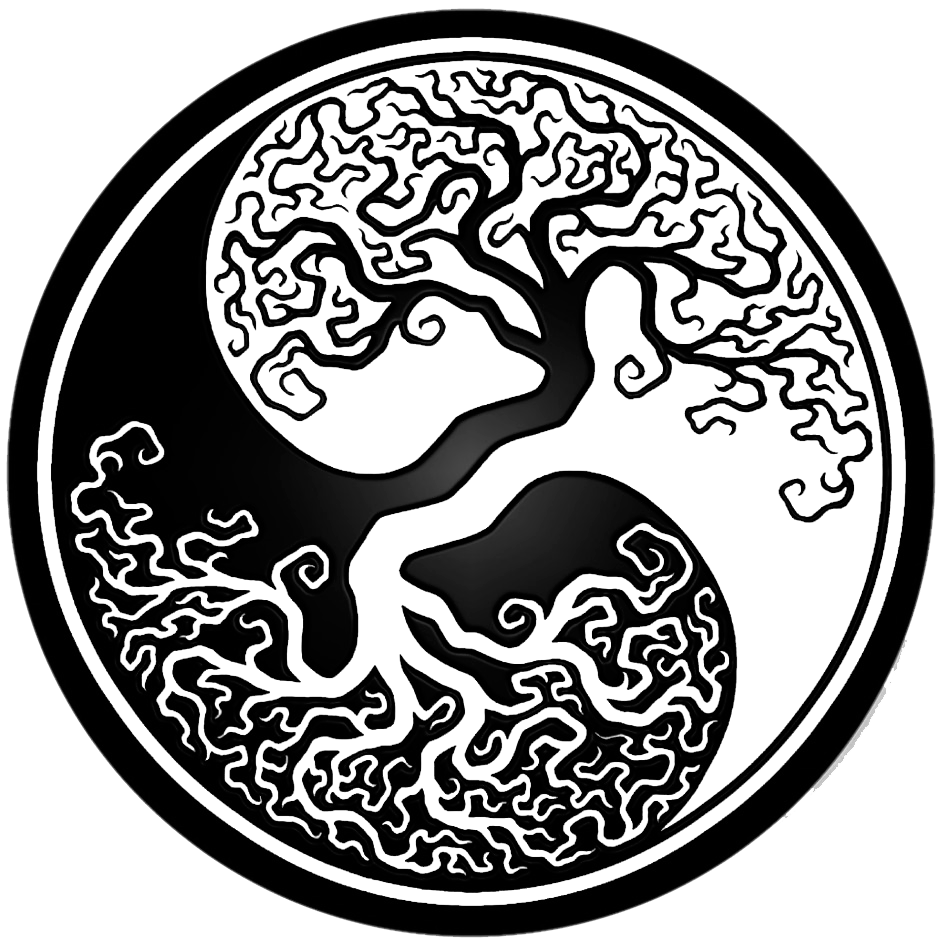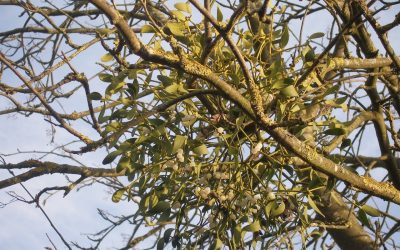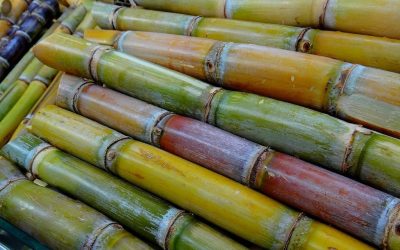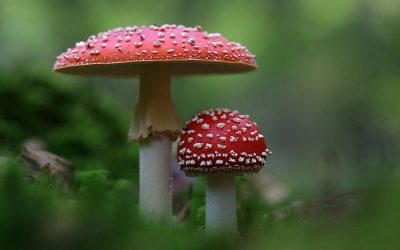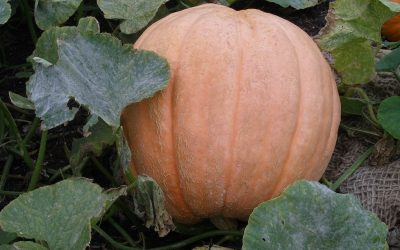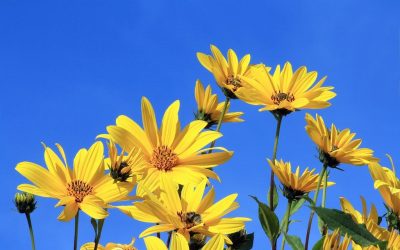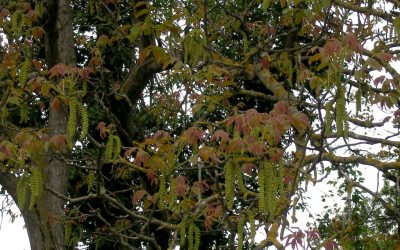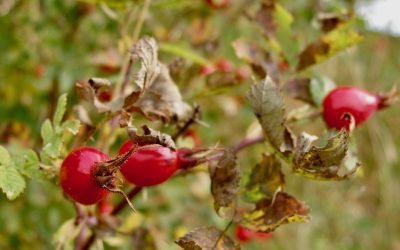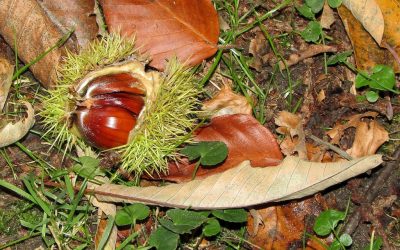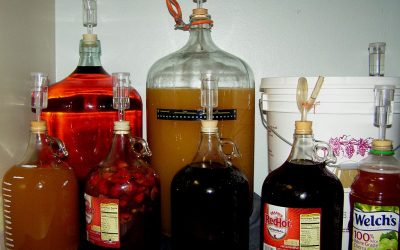Nature Notes:

Autumn Equinox
Happy Autumn Equinox!
On the Autumn Equinox, night and day are equal. Light and dark are in perfect balance. The Equinox marks the beginning of the end of the harvest season. We celebrate the gifts of the Earth and give thanks. In the Northern Hemisphere, the life-force begins its slow decline as it retreats into the subterranean realm of Hades. The days are getting shorter and cooler; summer is over. We celebrate the joys of the summer and are grateful for the harvest blessings.
The end of the summer is often intensely busy with hunting for nuts and mushrooms, preserving the gifts of the Earth and preparing for the coming dark season.
Stock up the larder and gather the supplies you need to see you through the winter.
Returning to work, we concentrate and focus on our projects and goals. But don’t forget to enjoy the pleasures of this in-between season, as nature explodes its dazzling display of autumn colours.
Image by Sabrina Ripke from Pixabay
Current issue
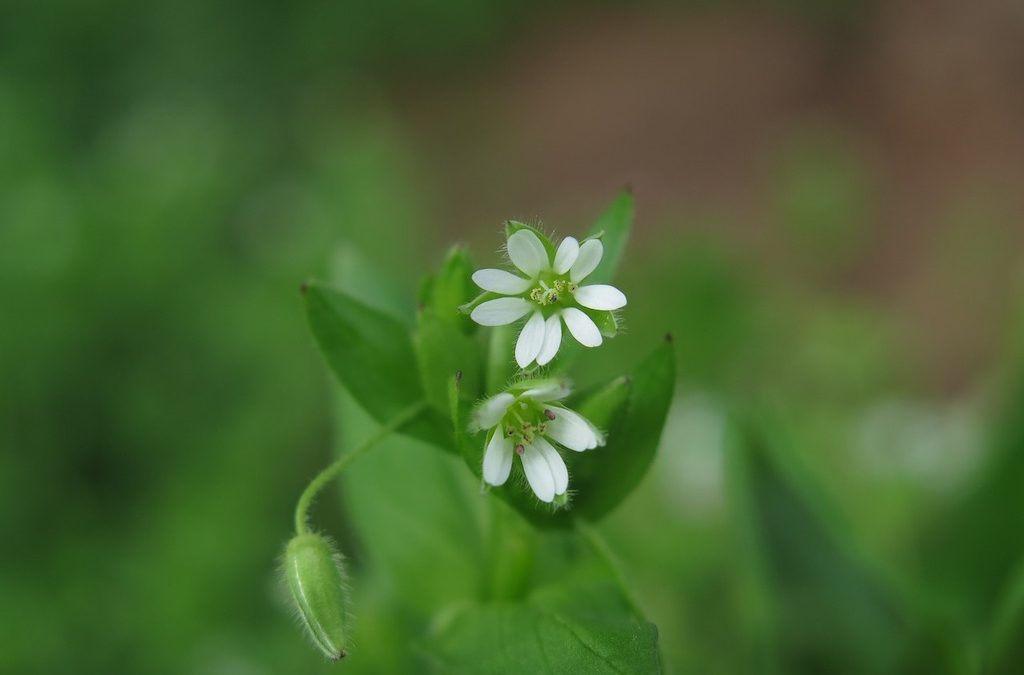
Foraging Chickweed
Chickweed (Stellaria media)
Once winter has settled in, foraging has come to a standstill. We have to rely on previously gathered supplies. Except, if you are lucky enough to live in a temperate climate zone, there may be at least one herb that defies the elements. You might have spotted it in your veggie plot: a little sprawling herb with heart-shaped leaves and star-shaped flowers that belongs to the Pink family known as Chickweed.
Chickweed is fairly hardy. It defies the elements and can pop up early in the year when other herbs are still asleep.
Chickweed is one of those herbs that gardeners love to hate. They try everything to get rid of this persistent ‘weed’ that pops up anywhere humans have toiled to cultivate the ground. It is only natural.
Chickweed is one of those herbs that blush at bare soil and quickly spread out to cover mother earth’s nakedness. Chickweed binds the soil, prevents it from washing away and drying out – the consequences of standard gardening practices.
Alas, as soon as this little healer herb appears, gardeners grit their teeth and start a crusade. How dare this audacious herb invade their plot?
But instead of battling it, you could welcome it as a gift. Chickweed is a blessing, not just for the earth but also for us. It is rich in chlorophyll, minerals, and vitamins that are sorely needed at this time of the year. And all we have to do is clip its tender tops.
Chickweed has a mild flavour and is incredibly versatile. It can be used like alfalfa to garnish sandwiches, soups, and salads. It can also be incorporated into omelets, fillings, sauces, dumplings, or quiches – the possibilities are endless. But it should always be used fresh and finely minced, as the stems can be somewhat stringy. When cooking with Chickweed, bear in mind that it cooks down to practically nothing in no time at all, so just add it at the last moment and don’t cook it for long. Overcooking would only diminish its benefits.
Chickweed also offers some valuable medicinal properties. The old herbalists describe its effect as cooling and soothing. They used it as an expectorant for afflictions of the upper respiratory tract, like an irritable cough. The same cooling and soothing properties also calm inflamed sores, rashes, itchy skin conditions, and burns. Traditional herbalists used it to make ointments and poultices for treating eczemas, boils, and abscesses.
Sometimes it is made into a tincture, but fresh works best. If you want to concentrate its effect, it can be juiced. But it does not keep very long. It can be frozen, but that will diminish some of its goodness.
Warning: some people have reported allergic reactions to Chickweed collected from chalky soil. Like many other members of the Pink family, Chickweed contains saponins, and these can be toxic in large quantities.
Plant Profile:
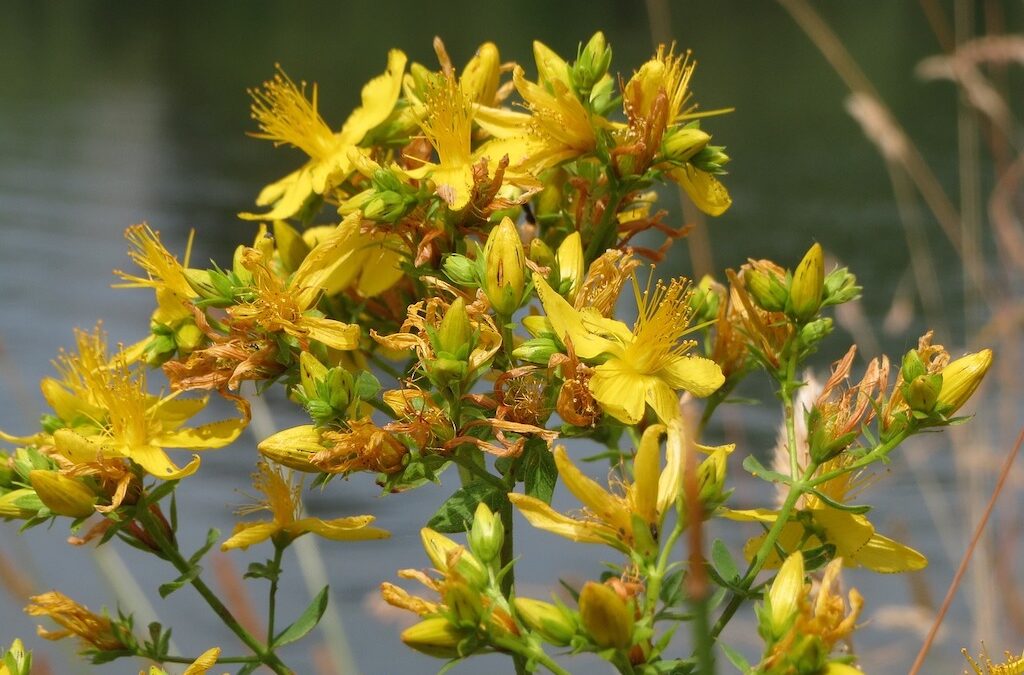
Plant Profile: St. John’s Wort
Hypericum perforatum (Clusiaceae)
St John’s Wort is the kind of herb that gladdens the heart just by looking at it. Many magical and medicinal properties have been ascribed to it and even its name alludes to certain divine connotations: it was named in honour of St. John, the Baptist, whose saints’ day is on June 23rd. He presides over the Christianised version of the Midsummer Feast, the most important feast day of the ancient pastoral calendar. Yet, it is often considered a noxious weed, particularly in agricultural circles. Let’s take a closer look.
Description:
St. John’s Wort is a perennial herbaceous plant that can reach a height of up to 2ft. The stem bears two raised lines along their length and branches in the upper parts. Numerous translucent dots cover the ovate to linear leaves. These are oil glands that store essential oil. The margins are entire and show tiny black dots around the edges. These oil glands produce the red oil. The five-petaled, yellow flowers look like little stars or suns. Clusters of flowers bloom from June to September. The tiny seeds are borne in capsules. St John’s Wort tastes balsamic, aromatic and slightly bitter. Squish the flower-buds between your fingers to verify its identity. St. John’s Wort, when pressed, stains red.
Habitat:
St. John’s Wort grows throughout Central Europe and the British Isles. Its habitats are verges, meadows, hedgerows, wood clearings, and waste places. It has become naturalised in many parts of the US, where it is regarded as a noxious weed.
HISTORY
The Doctrine of signatures assigns this herb to the Sun, not only because its flowers look so sunny, but also because its flowering- and gathering season coincides with the zenith of the Sun at Midsummer. At this time, its potency is at its peak. The reddish oil has been associated with blood, the sacred juice of life. Saint John’s Wort has long been revered as a magical herb that was said to ward off all kinds of witches and devils, and was even often offered as a Midsummer sacrifice to ensure the continuity of life.
Some sprigs were cast on the solstice bonfires, others were blessed and hung above the doorways and into the rafters of stables and barns. This custom was believed to offer protection against the hazards of the burning power of the sun: fires, lightning, and droughts, and to ward off witches and demons.
St John’s Wort enjoyed its greatest glory during the Middle Ages, when it was known as ‘Fuga Daemonium’ and it was deemed a protective force against all evil.
All efforts of the Church to demonise the herb had failed and so it was absorbed into Christian mythology and given to St. John, the Baptist, who’s Saints Day falls on June 24th, right at the height of the herb’s flowering time. The red oil was said to be a reminder of the Saint’s martyrdom.
Many of the old Pagan traditions were absorbed into the new faith but reinterpreted to fit its own mythology: It was probably the only herb to have been used in the Witch trials to identify witches, using talismanic magic:
The formula:
SATOR
AREPO
TENET
OPERA
ROTAS
was written on a piece of paper and placed on a piece of leather along with some St. John’s Wort that had been gathered during the first quarter of the moon. This talisman was supposed to reveal the true identity of a witch, since no witch could disguise her identity in the presence of such a forthright and radiant herb. It had the power to banish all the evil powers. (Just how it did so is not clear).
Today, St. John’s Wort’s magical associations have largely been forgotten. But it continues to play an important role in medical herbalism, especially as a natural anti-depressant. But not all consider it benevolent. In the US, it is considered a noxious weed that is dangerous to cattle. The allegations are that its photosensitising properties are hazardous to humans and cattle alike.
St. Johns Wort is indeed photosensitising. It is most likely to harm grazing animals that may consume large amounts of it while being exposed to intense heat without access to sheltering shade. This problem is severe in the overgrazed southwestern parts of the US. Internal use of St. John’s Wort herb rarely poses this threat to humans, (although it is conceivable). It is therefore recommended to avoid St. John’s Wort if one spends a lot of time in the sun or in the solarium.
Caution is also advised when using it in the treatment of depression. St. John’s Wort affects the serum-levels of the Neurotransmitter Serotonin, which may produce negative effects when used with other anti-depressant drugs that also affect the metabolism of neurotransmitters. Finally, St John’s Wort is a powerful liver cleanser. It cleanses the liver eliminates all kinds of toxins – including pharmaceutical drugs and birth control pills, rendering them useless. Thus, it is always advised to consult with a qualified practitioner who can advise you on any drug interactions or other ill-effects, before attempting to use St. John’s Wort medicinally.
Medicinal Uses
PARTS USED: Aerial parts, collect when in flower, for the oil usually only the flowering tops are used
CONSTITUENTS: Essential oil – caryophyllene, methyl-2-octane, n-nonane, n-octanal, n-decanal, a-and b pinene, traces of limonene and myrcene, hypericin (photosensitizing), hyperforin, Glycosides (rutin), tannin, resin, pectin
ACTIONS: Antidepressant, sedative, nervine, anti-inflammatory, anti-bacterial, astringent, vulnerary, diuretic
MEDICINAL USES:
Internal Use:
St. John’s Wort is a tonic for the whole body: a gentle cleansing remedy that improves overall function and tones the vital organ systems. It improves and regulates the metabolism and tones the stomach, liver, and kidneys, thus helping the body to clear out toxins. Internally, a small amount of the oil or, better still, the expressed juice, taken on an empty stomach, has been used for treating stomach ulcers and gastritis. Freshly pressed St. John’s Wort juice also has a history of use as an astringent to stop internal bleeding, spitting of blood, and (bloody) diarrhoea.
St John’s Wort is also an excellent nervine. Its calming and sedative properties soothe the nerves, headaches and migraines and alleviate anxiety, melancholy, and irritability, especially during menopause, or PMT. Old herbals also recommend it for ‘shaking and twitching’ (Parkinson? Epilepsy?). It is considered a specific for curing bed-wetting in children, especially when caused by anxiety. For this purpose, 1 tablespoon of the infusion, given at bedtime, is said to suffice. As a diuretic, St. John’s Wort assists the kidneys to flush waste materials and toxins from the body. The tea is effective for indigestion, stomach catarrh, and as a vermifuge. For therapeutic purposes, it is best to use the fresh herb or tincture, as the dried herb has lost much of its potency.
External Use:
In the past, the external use of St. John’s Wort was much more common. It was cherished as an excellent wound healer that could cleanse the wound and ‘knit the skin together’. It was applied to wounds and cuts, bruises, varicose veins, and burns. For this purpose, the expressed juice, or a compress made from the fresh, bruised herb was used. Modern herbalists prefer a diluted tincture. Tabernaemontana reports that the powdered dried herb can be strewn directly into ‘foul’ wounds to clean and heal them. In his days, midwives also used the herb as a fumigant to help women who encountered severe problems with their pregnancies or during childbirth.
St. John’s Wort Oil
Traditionally, the flowers were steeped in Poppy seed oil to produce a bright red oil. However, since Poppy Seed oil has become very hard to find, Olive oil can be substituted. After gathering the fresh tops, spread them out on a baking sheet and let them wilt for a few days. This will evaporate most of their water content. Fill a jar with the wilted flowering tops and cover with oil. Macerate for 4 weeks in full sun. Strain the oil, repeat the process using the same oil but adding fresh flowers. This oil is used for treating sunburn, other mild burns, neuralgia, sciatica, and rheumatic pain, as well as sprains and strains, cuts, wounds, as well as muscle aches and nerve pains. It is also said to reduce scarring. Tabernaemontana mentions an elaborate recipe for a compound oil, which, among other things, includes various gums and resins, such as frankincense, myrrh, mastic and other herbs, including Plantain leaves, Yarrow and Tormentil, which he claims, will be a superior oil, effective for treating just about any kind wound.
CAUTION:
Since St. John’s Wort contains the photosensitising agent hypericin, avoid direct sunlight after either internal and external use of St. John’s Wort. If you are taking pharmaceutical drugs, especially anti-depressants, consult with a knowledgeable doctor regarding the possibility of negative drug interactions. The efficacy of birth control pills can not be taken for granted if St. John’s Wort is used orally at the same time.
More articles:
Gardening Jobs in January
It’s January – there isn’t a whole lot to do in the garden at this time of the year, but there is always something. Here are some ideas for impatient gardeners.
Plant Profile: Mistletoe – Viscum album
Plant Profile: Mysterious Mistletoe. This strange evergreen plant has a fascinating mythology and some very interesting medicinal uses, too.
The Bittersweet Story of Sugar
The story of sugar is bittersweet indeed. It’s a tale of brutal exploitation and of environmental devastation and our sweetest addiction.
Fiber Plants
Fiber plants have long been used for cordage, rope, carpet backing, canvass, as well as for finely woven textiles. Flax, Cotton, Hemp, Ramie, Kenaf, and coconut fibre are among the most widely used natural fibers.
Fly Agaric (Amanita Muscaria)
Bold and undeniably conspicuous, the bright red cap with its white flaky speckles gives this fungus away. Every child knows its name.
Pumpkins (Curcubita sp)
Since it is nearly Halloween I thought I’d write a post about pumpkins – predictable I know, but nonetheless a fascinating topic.
Earth Charter Initiative
The Earth Charter is a declaration of 16 fundamental principles for building a just, sustainable, and peaceful global society in the 21st century.
Jerusalem Artichokes
Jerusalem Artichokes are the perfect edimental, spreading lovely late summer cheer and providing nourishing goodness through the winter. And they are very versatile, too!
Plant Profile: Walnut
Walnut trees (Juglans regia) are acclimated foreigners in our northern latitudes. Their home is in the warm, and fertile regions of south-east Europe, northern Greece, northern Italy, and France, where they are widely cultivated.
How To Make Rose-Hip Syrup
Rose hips are packed full of vitamin C and an excellent immune system booster. Most people know the tea, but the syrup is super delicious!
Foraging: Sweet Chestnuts (Castanea sativa)
Nothing quite conjures up the magical atmosphere of autumn as the warm, sweet scent of roasted chestnuts. It immediately invokes images of bonfires and harvest feasts.
Preserving the Harvest (2)
What to do with all the excess fruit? Homemade wines and liqueurs may be just the answer to your bucketloads of fruit
